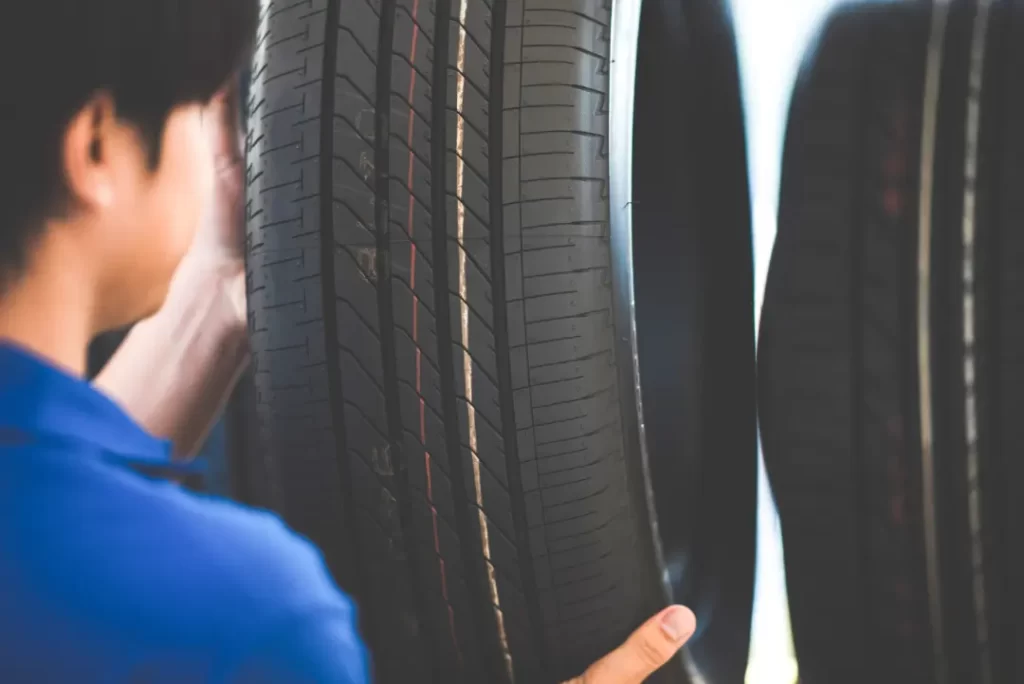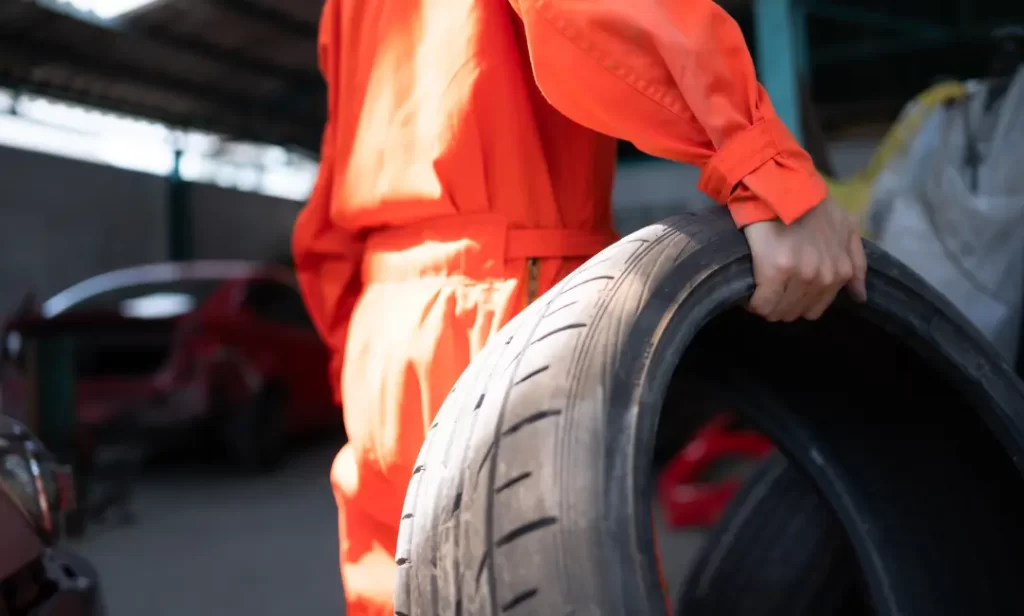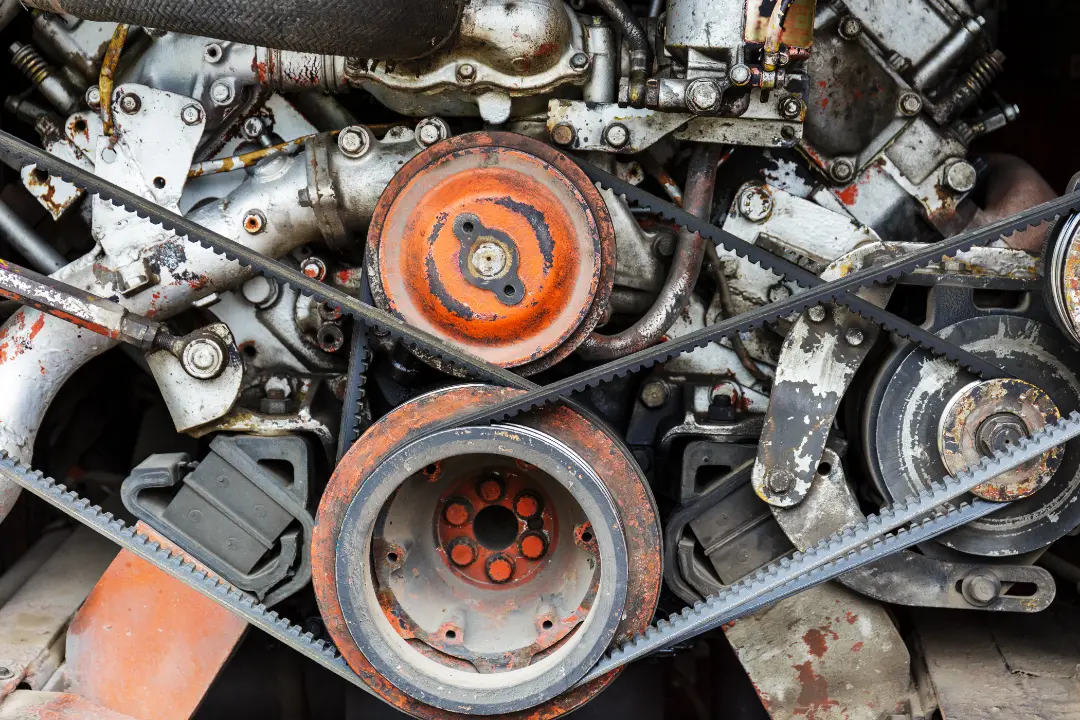A tyre speed rating indicates the maximum speed at which a tyre can safely operate. Coded by letters, these ratings help you choose tyres that match your vehicle’s performance and ensure safe driving.
In this article, we’ll explain everything you need to know about tyre speed ratings, including how to locate them on your tyres.
Key Takeaways
- Tyre speed ratings indicate the maximum speed a tyre can safely handle, which is crucial for vehicle safety and performance.
- Choosing tyres with appropriate speed ratings prevents potential tyre failure and enhances handling, grip, and braking efficiency.
- Fitting tyres with lower ratings is risky. It increases the chance of overheating, blowouts, and accidents.
- Higher-rated tyres can be fitted safely. They may improve stability, stopping distances, and cornering ability.
- Consistent ratings across tyres are important. Mismatched ratings can reduce control and compromise insurance.
- Load index matters alongside speed ratings. Choosing tyres with the correct load and speed rating ensures safety and legal compliance.
- Using tyres with mismatched speed ratings can compromise safety, affect vehicle performance, and may void car insurance coverage.
Understanding Tyre Speed Ratings
Tyre speed ratings indicate the maximum safe speed a tyre can sustain without compromising safety. These ratings ensure your tyres can handle the speeds your vehicle can reach.
The tyre speed rating chart matches specific letters to corresponding maximum speeds. For example, a tyre with a ‘V’ rating can safely reach speeds up to 240 km/h (149 mph) at top speed.
In the UK, your tyres must meet or exceed the manufacturer’s recommended speed rating, ensuring safe performance at the vehicle’s intended top speed.

What is a Tyre Speed Rating?
A tyre speed rating is represented by a letter code. It indicates the maximum speed that a tyre can safely handle. This rating is crucial for maintaining tyre safety and performance during driving. The ratings range from L – up to ‘(Y)’.
These ratings are calculated based on a European standard, with each letter representing a specific speed increment. For example, ‘S’ rated tyres are suitable for speeds up to 180 km/h (112 mph), while ‘W’ rated tyres are designed for speeds up to 270 km/h (168 mph). Exceeding the tyre’s speed rating can lead to safety issues.
The speed rating is typically found at the end of the tyre code on the tyre sidewall. For example, in the tyre code 205/55R/16/91V, the last letter is significant. The ‘V’ represents the speed rating of the tyre. High-performance vehicles often require higher speed ratings like ‘W’ or ‘Y’ to ensure they can handle the stresses of high-speed driving.
Why Tyre Speed Ratings Matter
Tyre speed ratings play a vital role in ensuring safety, ride comfort, and vehicle performance. Choosing the correct tyre rating helps prevent tyre blow-outs and enhances grip and stopping distances, especially at higher speeds.
Higher speed ratings often indicate tyres that offer better performance, but may experience tread wear faster due to the softer rubber compounds used.
Tyres with a speed rating that is too low can cause excessive heat build-up, increasing the risk of blowouts or tyre failure. This not only endangers the driver and passengers but also other road users. Adhering to the correct speed rating maintains tyre safety and performance.
How to Find Your Tyre’s Speed Rating
Finding your tyre’s speed rating ensures you are using the correct tyres.
Locating the Speed Rating on the Tyre Sidewall
The tyre speed rating is always indicated on the tyre sidewall, shown as the final letter after the load index in the tyre size code. For example, in the code 205/55R16 91V, the ‘V’ represents the speed rating, meaning the tyre is approved for speeds up to 240 km/h (149 mph).
This rating is not printed on the fuel filler cap or door frame stickers; those areas only list the recommended tyre pressures and sometimes size/load index, not the speed rating itself.
Other Sources for Speed Rating Information
Besides checking the sidewall, you can find the correct speed rating for your car in the vehicle handbook or sometimes on the tyre information sticker inside the driver’s or passenger’s door frame. These sources ensure you fit tyres that meet the manufacturer’s required specifications.
Tyre Speed Rating Chart
A tyre speed rating chart shows the maximum speed a tyre can safely sustain under controlled conditions.
These ratings are represented by letters, each corresponding to a maximum speed measured in kilometres per hour and miles per hour. By referring to this chart, drivers can select tyres that meet or exceed their vehicle’s manufacturer specifications.
| Speed Rating | Maximum Speed (km/h) | Maximum Speed (mph) | Typical Use |
| L | 120 | 75 | Off-road/specialist tyres, trailers, temporary spares |
| N | 140 | 87 | Temporary spare tyres |
| P | 150 | 94 | Light trucks, some vans |
| Q | 160 | 99 | Winter tyres, 4×4 |
| R | 170 | 106 | Vans, light trucks |
| S | 180 | 112 | Family cars |
| T | 190 | 118 | Standard passenger cars |
| H | 210 | 130 | Executive saloons, some SUVs |
| V | 240 | 149 | Sports cars, high-performance vehicles |
| W | 270 | 168 | High-performance sports vehicles |
| Y | 300 | 186 | Supercars |
| (Y) | Above 300 | Above 186 | Ultra-high-performance supercars |
The Role of Load Index in Speed Ratings
The load index is crucial for maintaining safety and performance. Exceeding the maximum load indicated by the load index can lead to tyre failure and affect overall vehicle performance. Considering both the speed rating and the higher load rating is important when selecting tyres.
What is a Tyre Load Index?
The tyre load index is a number that corresponds to the maximum weight a tyre can safely carry. This number ensures the tyre’s compatibility with the vehicle and maintains safety.
The load index is found on the tyre sidewall, typically following the tyre size. For example, a load index of 91 means the tyre can support up to 615 kg. Having the appropriate load index prevents overloading and potential tyre failure.
Tyre Load Index Chart
The tyre load index indicates the maximum weight a tyre can safely carry when properly inflated. This number is critical to ensure your tyres can support your vehicle’s weight without risk of failure.
The following chart lists common load index values and their maximum weight capacities in kilograms and pounds.
| Load Index | Max Load (kg) | Max Load (lbs) |
| 75 | 387 | 853 |
| 80 | 450 | 992 |
| 85 | 515 | 1,135 |
| 88 | 560 | 1,235 |
| 91 | 615 | 1,356 |
| 94 | 670 | 1,477 |
| 97 | 730 | 1,609 |
| 100 | 800 | 1,764 |
| 104 | 900 | 1,984 |
| 110 | 1,060 | 2,337 |
| 120 | 1,400 | 3,086 |
Can You Fit Tyres with Different Speed Ratings?
Fitting tyres with different speed ratings can have significant implications for safety and legality.
Higher Speed Ratings
It is legal to fit tyres with a higher speed rating than required. This means there is no need to inform your insurance company, and no penalties will apply. Higher speed ratings can enhance vehicle stability and performance, especially for high-performance vehicles.
Tyres with higher speed ratings offer better grip, shorter stopping distances, improved cornering ability, and enhanced stopping power. These benefits make higher-rated tyres a good choice for sports cars and other high-performance vehicles.
Lower Speed Ratings
Using tyres with a lower speed rating than what is required can increase the risk of tyre failure, especially when driving at high speeds.
Lower-rated tyres are not designed to handle the same performance demands, which can lead to dangerous driving conditions and potential accidents, particularly if you are using the wrong tyres.
Using tyres with a lower speed rating than recommended can have the following effects:
- Insurance companies may refuse claims if the tyres do not match the manufacturer’s recommendations.
- It compromises your safety.
- It compromises your financial protection.
Importance of Consistent Tyre Speed Ratings
Using tyres with mismatched speed ratings can lead to safety hazards and affect vehicle handling. Consistent speed ratings across all tyres ensure optimal grip, braking efficiency, and overall vehicle performance.
Fitting tyres with a higher speed rating than required can:
- Enhance stability and performance without legal issues. Maintaining the same speed rating helps:
- Prevent control issues
- Reduce the risk of tyre failure.

Tyre Speed Ratings and Car Insurance
Tyre speed ratings can significantly impact car insurance. Using a tyre with a lower speed rating than recommended may invalidate your insurance or affect the outcome of any claims.
Insurance providers may refuse claims if the fitted tyres do not match the recommended speed rating for the vehicle.
Using the correct speed rating and the right speed rating safely maintains legally approved, valid insurance coverage and ensures safety.
All Vehicle Services: Your Trusted Garage for Tyre Fitting and Tyre Replacement in Sittingbourne
At AVS Sittingbourne, we offer authentic, high-quality tyres from leading brands, fitted with precision by our expert technicians. Whether you need a quick replacement, a full set of new tyres, or advice on speed ratings that match your vehicle, our team is here to guide you with honesty and care.
We also make tyre care easier than ever with our mobile tyre fitting service, so you don’t have to waste time sitting in a garage when we can come directly to your home, workplace, or even roadside. With AVS, you get the perfect balance of top-quality products, trusted service, and unmatched convenience.
- Our mobile tyre fitting vans are fully equipped, bringing professional service straight to your home, office, or roadside in Sittingbourne.
- Every tyre is fitted by experienced, skilled technicians who make sure your tyres are correctly installed, balanced, and road-ready.
- We offer a wide selection of tyres for every budget, from premium performance options to reliable everyday sets.
- Our pricing is always clear, fair, and transparent, with no hidden extras or surprises at checkout.
- As a trusted local Sittingbourne garage, we’ve built our reputation on honest advice, reliable service, and genuine customer care.
No more wasting time at unreliable garages or risking cheap imports. With AVS, you get service, safety, and value all in one. Book your tyre service with us today.
Frequently Asked Questions
What is a tyre speed rating?
A tyre speed rating is a letter code on the tyre sidewall that indicates the maximum safe speed the tyre can withstand. It is essential for ensuring optimal performance and safety while driving.
Why do tyre speed ratings matter?
Tyre speed ratings are essential for safety and performance. They help prevent blow-outs and ensure optimal grip and handling. Using tyres with the appropriate speed rating for your vehicle is vital for maintaining control and stability while driving.
Where can I find my tyre’s speed rating?
You can find your tyre’s speed rating on the tyre sidewall, in the vehicle owner’s manual, or on the tyre specification sticker located in the driver’s door frame. It is essential to check these locations to ensure you have the correct information.
Can I use tyres with a higher speed rating than required?
Yes, using tyres with a higher speed rating is permissible and can improve your vehicle’s stability and performance. In this case, there is no requirement to inform your insurance company.
What happens if I use tyres with a lower speed rating than recommended?
Using tyres with a lower speed rating than recommended can result in tyre failure, jeopardize safety, and potentially affect your insurance coverage. It is crucial to adhere to the specified ratings to ensure optimal performance and safety.
Conclusion
Understanding and adhering to tyre speed ratings is crucial for vehicle safety and performance. Ensuring your tyres meet or exceed the required speed rating helps prevent tyre failure, enhances grip, and maintains optimal driving conditions.
Choosing All Vehicle Services can provide peace of mind and ensure your vehicle is equipped with the right tyres.
By prioritising tyre safety, you contribute to overall road safety and enjoy a smoother, more efficient driving experience.


